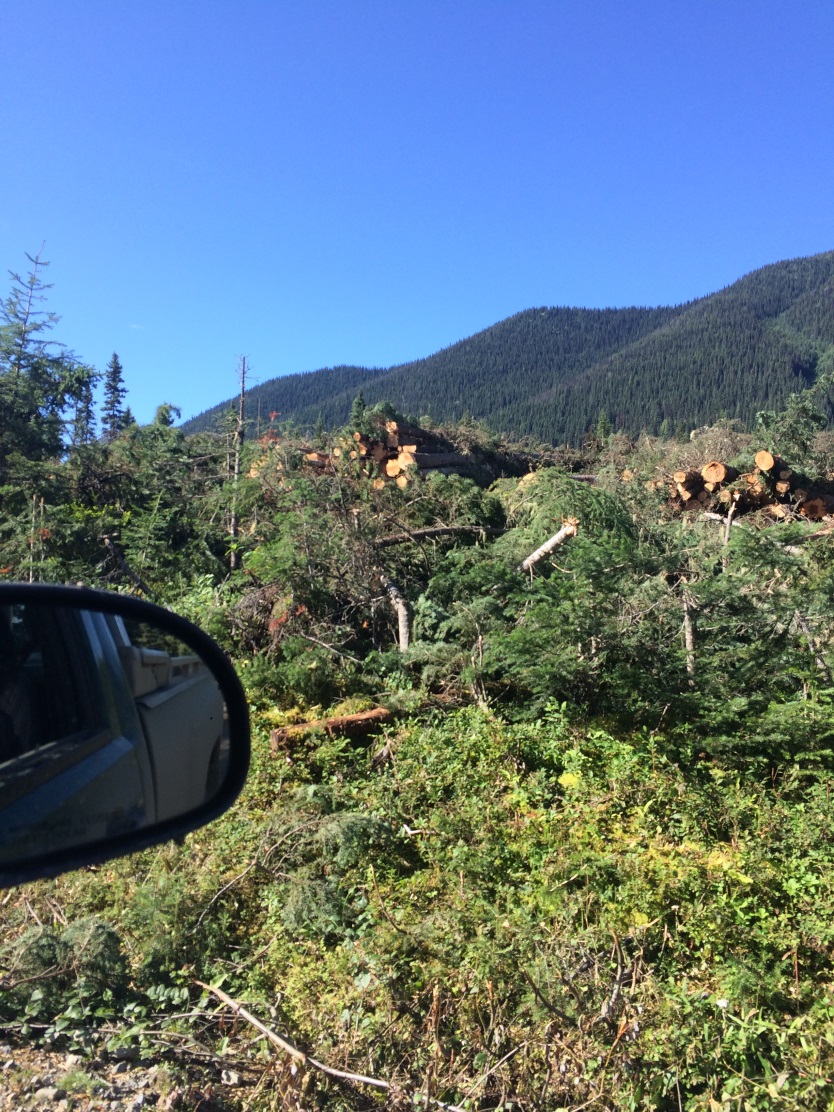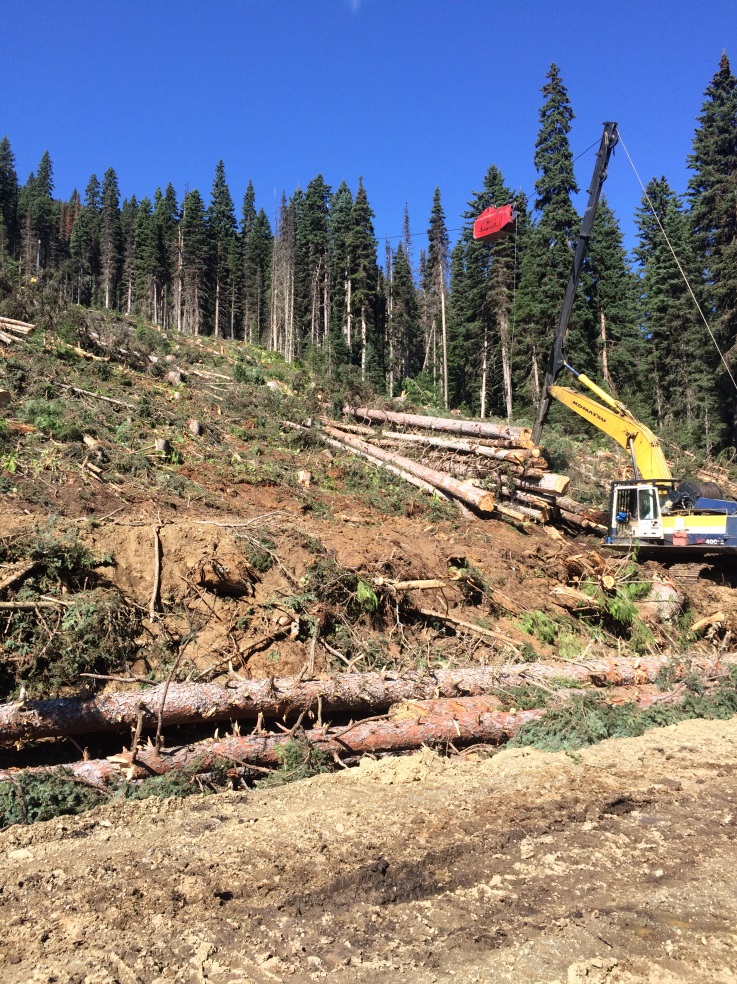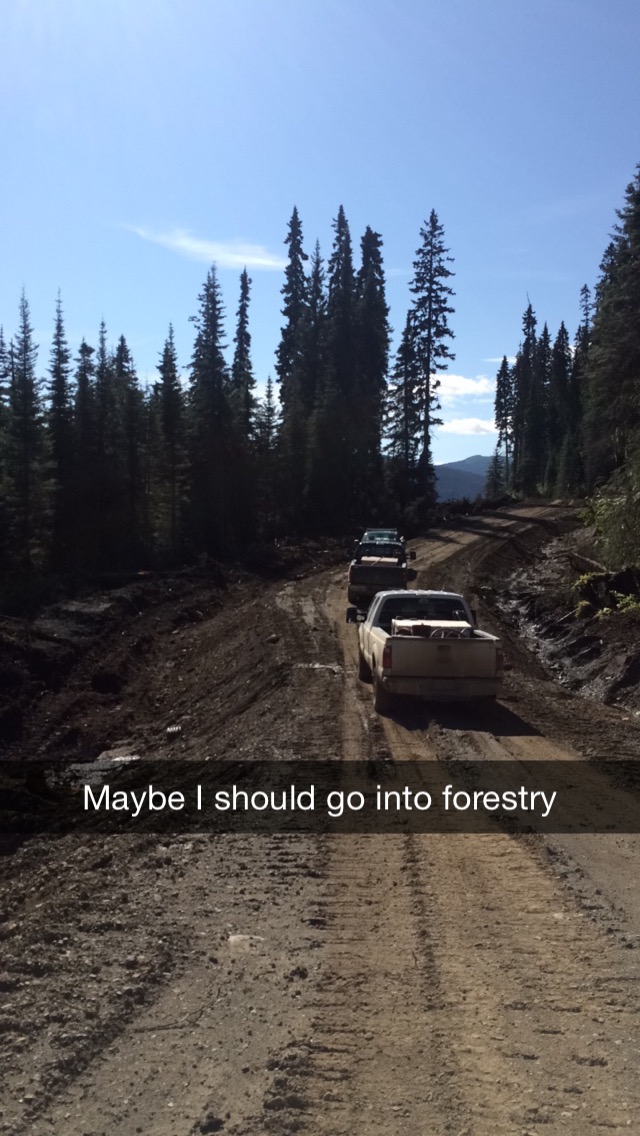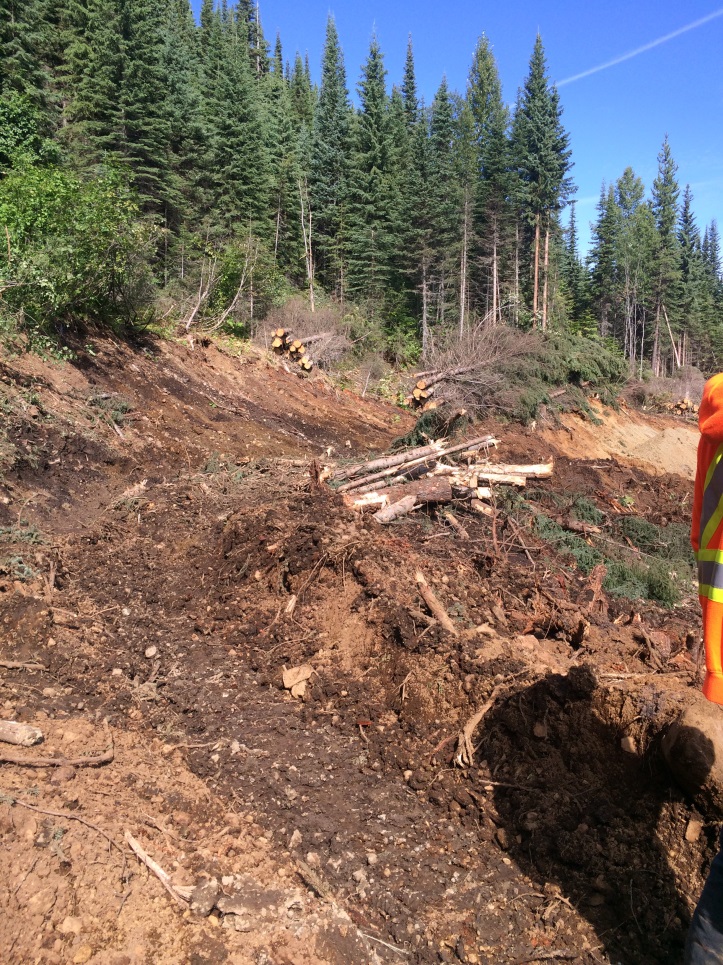Bush Tour
August 21, 2015 9:45 am Leave your thoughts
If there’s one thing in this world that I love, it is the smell of freshly cut trees. Last week I got the opportunity to go on a bush tour and tag along with a harvesting supervisor for the Quesnel division. Our day started a little earlier than normal but it wasn’t anything coffee couldn’t help. We hopped in the truck and headed west out past Wells, BC and towards Bowron Lake. I had planned for almost anything that day, suited up in my water proof hiking boots and rain jacket. I was going to be ready rain or shine. The only thing that slipped my mind was that I’d be stuck in a vehicle on some very rough terrain for an extended period of time. Which if you’re like me and pretty much have shares in Gravol, a drive over bumpy and windy terrain can be unsettling.

Despite having been always around the forest industry growing up the actual cutting down of timber was something I had yet to witness so I was eager to see as much as I could. Our first stop was a cable logging operation. Here in BC especially northern BC nice, usable timber is becoming harder to find thanks to the mountain pine beetle which means finding new ways to get fiber out of the bush and into the yard. Justin works on some very mountainous terrain where there are plenty of viable trees but the issue is how you get your bunchers and other machinery onto the hill side. This is where cable logging shines. Two laborers, one machine and a chainsaw work in paths up the hill side. The person on the hill side hand falls the trees with their chain saw getting them ready to bring them to the bottom of the hill for processing. The person at the bottom of the hill operates a motor on a zipline that is able to crawl up and down the line. Attached to the motor is a noose that the faller is able to wrap around a tree or two. The operator then brings the motor with trees in tow to the bottom of the hill where they’re piled, disconnected and back up the motor goes to grab another load. Once that strip of trees is cleared the machine and operators moves over and repeats. It’s much slower than traditional logging but the fiber supplied is worth the extra time and cost.


It was a beautiful day outside and I was strongly considering hanging up my keyboard and trading my adding machine in for a pair of cork boots. Then I decided I’ll just try to make a bush tour a yearly event because I do genuinely enjoy being able to wear heels to work.
It was a relatively slow day out on site and despite not having a buncher operating that day Justin drove us around till we found the hand faller who was working just so I could watch a tree fall down.

(Road being built)
When it comes to getting timber off of crown land there are three steps that need to be taken and it wasn’t until I went out with Justin did I realize just how regulated and how much effort is taken to make sure we’re working legally and sustainably. The first step is planning. This is where foresters decide where the tree’s we’re harvesting are, the size and shape of the area being harvested and most importantly this is when water systems are mapped out. The amount of care, consideration and planning taken to conserve even just a trickle of water actually shocked me. Did you know that there are regulations saying you cannot have the tracks of machinery get within a certain distance of water systems? Or that when we’re logging we can’t cause trees to fall into water either? The other thing that surprised me when it came to harvesting was that we cannot cut down trees so that the hole left behind has square corners. Or that the views you see from your car as you drive down the highway is actually regulated so that a certain percentage of it cannot be cut down. Every little aspect of forestry has either been thought about or regulated. I had always just assumed that if the mill needed a certain number of logs we just went into the bush and started wielding a chain saw…. Ok maybe not that extreme but there were things Justin pointed out that I wouldn’t have even thought about. It made me proud to see a big corporation put in the time and effort to not just get the job done, but to get the job done right.
Once the plan is in place it’s time to harvest, this is where the trees get cut down, processed and brought into the mill to be turned into lumber, plywood, pulp or MDF.
After harvesting is complete our silviculture department comes in to replant and help grow the forest back up for us to harvest again 80-90 years down the road. When I asked Justin if we plant 1 for 1 (one tree planted for every one tree harvested) he said the ratio was probably way higher than that. In a hectare we on average only get 700 trees from an old growth forest just due to natural outcomes. When we replant the site we’re required to put down 1800 trees where 700 once stood. While not all 1800 are expected to reach maturity, at least 700 are required to have survived 8-15 years after the plant.
Sustainable forestry is important for everyone from the environment to the 20% of BC residences who work in the industry. I’m proud to say I work for a company who takes it so seriously.
